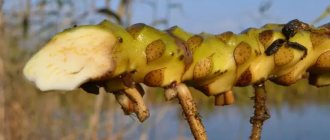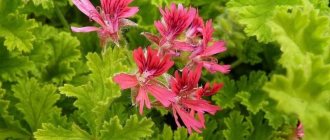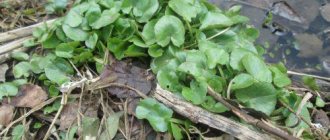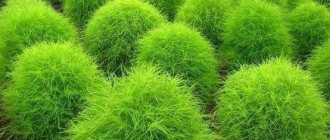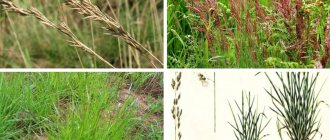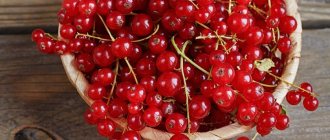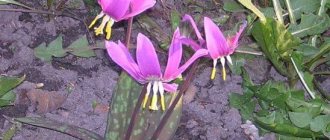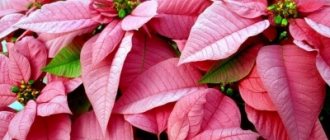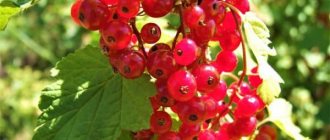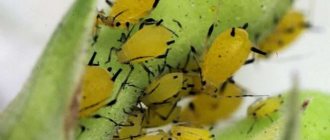Blood red garden geranium (Geranium sanguineum)
Blood red geranium is a type of herbaceous perennial plant. In some sources it is referred to as blood-red geranium or purple-red geranium, also known as red pelargonium. The flower belongs to the Geraniaceae family. The peculiarity of the plant is its long, knotty roots. The plant is perennial; it can grow in one place for 13-15 seasons without replanting.
Blood red geranium
The Geranium Sanguineum plant, growing, forms a spherical bush with a height of 20-50 cm. The shape of the bush is spherical - it can reach almost half a meter in width. The peculiarity of flowering is a large number of inflorescences blooming continuously throughout the season.
Breeding work has been purposefully carried out since the second half of the 19th century. During this time, about 250 varieties of geranium were bred. The plant is widely used in folk and traditional medicine.
Geranium Max Fry
During the growing season, a large number of leaves are formed. They tolerate frosts and fairly long periods of winter without problems.
The flowers have a semi-double texture. The plant is distinguished by a wide palette of colors. Purple or pink shades are considered dominant. The flower size is 3.5-4 cm. Blood-red geranium blooms only in sunny areas; flowering in partial shade and shade is practically not observed.
Attention! When purchasing seeds, it is recommended to give preference to well-known global companies.
Don't trust unknown brands.
Medicinal properties and contraindications
In folk medicine, blood red geranium is used as a medicine to treat many diseases.
Among the therapeutic effects can be identified:
- sedative;
- antiseptic;
- pain reliever;
- hemostatic;
- anti-inflammatory;
- astringent;
- dissolving salt deposits.
The range of diseases for the treatment of which traditional doctors recommend using drugs based on this plant is extensive.
Important! Before using any of the traditional recipes, consult your doctor. Remember that self-medication can be harmful.
These include:
- bleeding (internal, nasal, uterine);
- wounds and ulcers on the skin and mucous membranes;
- ulcers;
- depression;
- schizophrenia;
- insomnia;
- salt deposits;
- fractures;
- tonsillitis;
- sore throat;
- bleeding gums;
- hair loss;
- stones in the kidneys;
- gout;
- rheumatism.
Contraindications to the use of this plant for medicinal purposes include:
- allergy to components;
- increased thrombus formation, thrombophlebitis, thrombosis;
- atonic constipation;
- gastritis with high acidity;
- stomach ulcer.
Find out what to do if geraniums don't bloom.
Plant varieties and popular winter-hardy varieties
Perennial garden geranium - planting and care
For flower lovers, several varieties of geranium have been bred, not only distinguished by their ease of cultivation and care. Many of them have an extremely interesting exterior.
- "Canon Mills" is a popular variety of geranium with beautiful light pink flowers of uniform color. The variety is just winning the hearts of florists, but has every chance of becoming one of the favorites on the list of favorite varieties.
- "Alan Bloom" is a geranium variety distinguished by its soft pink flowers. One of the most common varieties of geranium. Has high frost-resistant properties. Unpretentious, suitable for growing in most climate zones.
- "Striatum" is a summer flower. The peculiarity is the large number of flowers. The striatum is literally completely covered with inflorescences. The variety is very popular in garden and park compositions due to its abundant, long-lasting flowering. This variety is also often called crane grass because of the fruits formed after flowering, which are very similar to the beak of a crane.
- "Max Fry" is one of the most popular varieties of geranium among garden designers. The plant has large, densely arranged pink flowers. The flowers attract attention with clearly defined dark veins.
- "Horizon" is the common name for several varieties of geranium, among which the most popular are Horizon Red Ice and Horizon Star. The varieties have interesting flower colors, with a contrasting border around the edges.
Variety Striatum
- "Album" is a geranium variety with delicate white flowers and specific decorative foliage. Album is a large-flowered variety; the flower diameter often reaches 3-3.5 cm. Album tolerates frost well and has a long flowering period.
- “Maxima” is a geranium with large double flowers with a bright, rich cherry edging. Maxima gets along well with other types of geranium, while emphasizing its individuality.
- “Maverick Star” is a variety characterized by a compact bush structure, a large number of inflorescences and dense, rich foliage. Maverick will appeal to those who do not have the opportunity to have a large flower bed.
- "Vision pink" is one of the most compact types of geranium. Vision is a small bush, only 15 cm in height, which goes well with tall plant species.
Description of geranium
Garden geranium is a perennial ornamental deciduous plant with very delicate and beautiful flowers. Today there are about 300 species of this flower.
This extraordinary plant is valued not only for its delightful flowering, but also for its ability to form a lush, compact spherical bush with bright green lacy foliage.
Garden geranium flowers can have a wide variety of colors, except orange and yellow. Their size, depending on the variety, is 3-6 cm in diameter. This plant retains its decorative effect until frost.
Planting blood-red geranium in open ground
Perennial garden geranium - planting and care in open ground
To obtain long-term flowering, much depends on the choice of where to plant geraniums in the open ground and the creation of conditions for growth.
Variety Vision pink
- Selecting a location
For geraniums, it is recommended to choose a place with plenty of sunny color. The flower tolerates shadow painfully. But you should not plant it in the sun. Direct sunlight for 4-6 hours a day in summer will be enough for it.
- How to prepare the soil and flower for planting
For planting geraniums, it is recommended to select light and nutrient-enriched soil. In open ground, dig a hole two to two and a half times larger than the pot. For permanent planting, it is recommended to make the hole dimensions 60x60 cm.
Pots with blooming geraniums
Attention! Geranium does not like heavily waterlogged areas.
Do not plant in wetlands and low-lying areas with high groundwater levels.
Features of growing in the garden
Blood red geranium prefers sunny areas, but can also grow in partial shade. The main thing is that there is no stagnation of water in the soil, since this is a drought-resistant plant. If the planting site is low-lying, you can make a retaining wall for your pet, so the water will not stagnate.
Blood-red garden geranium is very easy to care for. Prefers loose, loamy and sandy calcareous soils, but can grow in any garden soil.
Geranium can grow in one place for up to 10-15 years without needing division or replanting. For some time after planting, it is necessary to carefully weed out all weeds that inhibit the growth of the plant. In the future, when the bush grows, there will be no special need for this; it itself will suppress the weeds.
How to care for pelargonium in summer
Geranium Rosanna hybrid - planting and care
Experienced gardeners say about blood-red geranium that if planting and care are carried out according to the rules, then already in the first year it can grow abundantly and bloom. In the summer months, proper watering and fertilizing are important factors here.
Watering rules and humidity
Geranium cannot be called a moisture-loving plant, but this does not mean that you should forget about watering. Watering is carried out evenly, with the obligatory loosening of the soil under the bush.
At high temperatures, watering is carried out once every 4-5 days; under normal conditions, 1 watering every 7-10 days is sufficient.
Fertilizing and soil quality
Fertilizing is carried out with mineral and organic fertilizers. For the summer months, it is recommended to use complex mineral or aqueous solutions of organic fertilizers.
When grown at home, red geranium prefers slightly acidic or neutral soil. In open ground conditions, it is recommended to choose a neutral medium; garden soil is suitable here.
Variety MAVERICK STAR
Pruning and replanting
In the summer, pruning is done only withered stems and inflorescences. It is recommended to replant by dividing the bush every 3-4 years. Planting in open ground in summer has a positive effect on the condition of the plant. But then in the fall you will have to repeat the procedure in reverse order.
Care for geraniums in winter
Before the onset of winter cold, the shoots are cut off so that 2-3 lower leaves remain. Bloody geranium is a frost-resistant plant, but many gardeners still recommend covering the bushes for the winter.
Attention! The descriptions of many varieties recommend autumn pruning. The contraindication applies only to royal geranium; pruning is very harmful to this variety. Therefore, you need to be very careful not to cause harm.
Other types of care work and disease prevention
Blood-red garden geranium (photo attached to the article) does not require shelter, since it is a winter-hardy plant that can easily tolerate low temperatures.
The flower is highly resistant to diseases and attacks of harmful insects. Geranium gets sick very rarely. A protective barrier for it is created by secreted phytoncides and essential oils.
With insufficient lighting and high humidity, the bush can be affected by powdery mildew. Treatment of an infected plant is carried out with Bordeaux mixture. Frequent waterlogging of the soil can provoke the appearance of gray rot. It is almost impossible to save a damaged bush, so it is immediately removed from the site. In case of brown spotting, geranium is treated with a fungicidal solution.
This, in principle, is all the care that a flower needs to be provided in a garden plot.
Garden blood-red geranium is a surprisingly colorful plant that can find a place in any garden. Proper planting, proper care and optimal maintenance conditions - and this perennial will delight its owners for a long time with its full growth and lush flowering.
Blood red geranium belongs to plants of the Geraniaceae family. This is a rather showy perennial with dense foliage that turns red in winter. This is why the culture got its name. The first mentions of it date back to the 16th century.
Features of flowering plants
Blood red geranium blooms in the summer and can last the entire season. However, this property is not characteristic of all varieties of this species. Some varieties have their own special periods of growth, flowering and dormancy.
Period of activity and rest
Most varieties begin flowering in June-July. It lasts until mid-August. Fruiting begins in September. Some varieties have an extended flowering period from the first half of June to the first ten days of September.
After the roses begin to fade and the seeds fall out of the capsules, the plant begins to enter a dormant period, which lasts until the end of April next year.
Self-seeding usually begins to bloom in the second year, seedlings produce their first color in the year of planting.
Types and forms of flowers
Red geranium flowers bloom unevenly, usually one or two at a time. Flowers collected in inflorescences bloom within 2-3 days. Single large ones usually open within 3-5 days on one plant. The petals have a straight, semi-double and double ending.
Where and how to plant?
The plant is unpretentious, however, it also has its own preferences.
Lighting and location
Geranium grows well in sunny or slightly shaded areas . A place that is lit for half the day is best. The plant will also develop in the shade, but then the flowers will be smaller and the color will not be as rich.
The soil
Loamy, fertile soil with good aerobic qualities and drainage is most suitable for it. It is desirable that the soil is well limed and has a slightly alkaline or alkaline acidity pH of 7.5-8.5.
Landing
Geranium feels great in one place without transplanting or dividing for 10-15 years . If you need to plant new varieties or create a new decorative element in the garden, follow simple rules:
The optimal planting time is September or March-early May.- Before planting, the soil is dug up, simultaneously enriched with peat, moss, humus, sand, and wood ash. In poor soils, in addition to organic matter, an additional complex mineral fertilizer is added 3-4 weeks before planting. After digging, carefully remove the remaining weed roots.
- Dig holes. When planting low-growing, miniature varieties, a distance of 25-30 cm is left between plants. If the variety is tall, or the plant is intended to be grown in one place for a long time without replanting, the distance is increased to 50 cm.
Red geraniums have long roots, so the depth of the hole should be large enough.
- To prevent the root system from rotting, a drainage layer is poured onto the bottom of the hole.
- The seedling is carefully placed in the planting hole and sprinkled with earth. The soil is lightly compacted by hand, watered well and sprinkled with mulch.
Flower care is easy and does not require special expenses.:
- Regular watering is only needed in dry weather. The plant is drought-resistant and does not like excess moisture.
- Weeding is required only in early spring. When the foliage grows and forms a dense carpet, the weeds will die on their own.
- The free space between the curtains is mulched. When the roots are exposed, add soil.
- Fertilizer is applied three times. Organic matter is applied before planting, nitrogen fertilizers are applied in May at the beginning of the growing season, and potassium-phosphorus fertilizers are applied during the flowering period.
- Autumn pruning of dry shoots, peduncles and leaves is carried out for better wintering and renewal of the bush in the spring. When pruning, leave stumps at least 5 cm long.
Flower propagation methods
When breeding geraniums, both seed propagation and flower division are used.
Reproduction by flower division
When replanting a plant in the spring, it is recommended to simply break the bush into several parts. Plant each part in a separate hole and water generously. The survival rate with this method is more than 95%.
Dividing the bush before spring planting
Seed propagation
When propagating from seeds, it is recommended to grow seedlings. When propagated by self-sowing, the survival rate is no more than 5-7%.
The time for planting seedlings is at the end of April - beginning of May. Seeds can also be scattered in late autumn.
Description
Regardless of the specific variety, all representatives of blood-red geranium have the same botanical parameters.
- The root system is represented by a long knotty rhizome.
- stem is forked , the length varies from 25 to 60 cm, and is covered with white fibers.
- The leaf blades are divided into 5–7 lobes, each of them, in turn, is also divided into 3 more parts. The leaves are green.
- The fruit is shaped like a crane's beak, brown, tasteless, and contains seeds.
- The flowers are presented in shades of pink, each consisting of 5 petals with a diameter of about 4 cm. In most cases, the inflorescences are semi-double, but simple varieties are also found.
Growing problems, diseases and pests
The greatest number of problems with geraniums is associated with a violation of the water regime. Overwatering usually causes the death of the plant. The most dangerous thing in this case is a large amount of moisture at low temperatures.
If ticks, whiteflies and aphids are detected, treatment with chamomile infusion is recommended. The solution is sprayed over the entire surface of the plant, the leaves are treated especially carefully. After 2-3 hours of action of the solution, it must be washed off.
When fungal diseases appear, treatment with Bordeaux mixture and Fitosporin is recommended. Treatment should be done according to a schedule: once every 10 days with Bordeaux mixture, and after 7-10 days with Fitosporin.
By following all the recommendations and advice, you can grow a beautiful and healthy plant in your flowerbed, which will delight the eye for many years. The red variety of geranium invariably attracts attention and pleases both the owner of the site and his guests.
Transfer
Blood-red geranium does not require constant replanting, but experienced gardeners still recommend replanting as the plant grows.
It is best to carry out these manipulations at the end of February or at the beginning of March. Geraniums can be replanted every year, or less often.
The substrate must be loose and light with high air and water permeability. Each new pot should be 1–1.5 cm larger than the previous one. Transplantation is carried out according to the following scheme:
- the new container must be disinfected, drained and sprinkled with fresh soil mixture;
- the plant is watered abundantly, and then carefully pulled out along with the earthen lump and transplanted into a new pot;
- all voids formed are filled with new soil and compacted;
- after that all that remains is to water the flower and leave it in a warm place for adaptation.
Video “Transplanting and propagation of geraniums”
From this video you will learn how to transplant and propagate pelargonium at home.
This is a low-growing variety. The maximum height of the bush is 15 cm. Like most varieties, it has a spherical shape. The stems are erect and branch well. Graceful leaves are formed on the shoots in large quantities. They are palmately dissected and slightly pubescent.
The striatum forms a large number of small buds. The petals are colored light pink. They have dark eyes. Flowering occurs from mid-June and continues until the end of summer.
In autumn, the leaf blade becomes purple or red. The bush is able to winter under snow. Therefore, the Striatum is often used in garden design and can be found in city parks and squares.
Alan Bloom
This is another planting variety that produces beautiful red flowers. Petals are light pink. They are characterized by the formation of darkened veins.
The plant has good resistance to various weather conditions. Therefore, Alan Bloom can be grown in a wide variety of climate zones.
Canon Mills
It is a very popular variety of garden geranium among our gardeners. The plant produces light pink buds during the flowering period, which falls in mid-to-late summer.
Max Frei
This variety is no less popular than Canon Mills. During the flowering period, the bush forms simple flowers with pink petals. They have dark veins. During flowering, Max Frey becomes very beautiful. Therefore, this variety is often planted in a garden bed.
